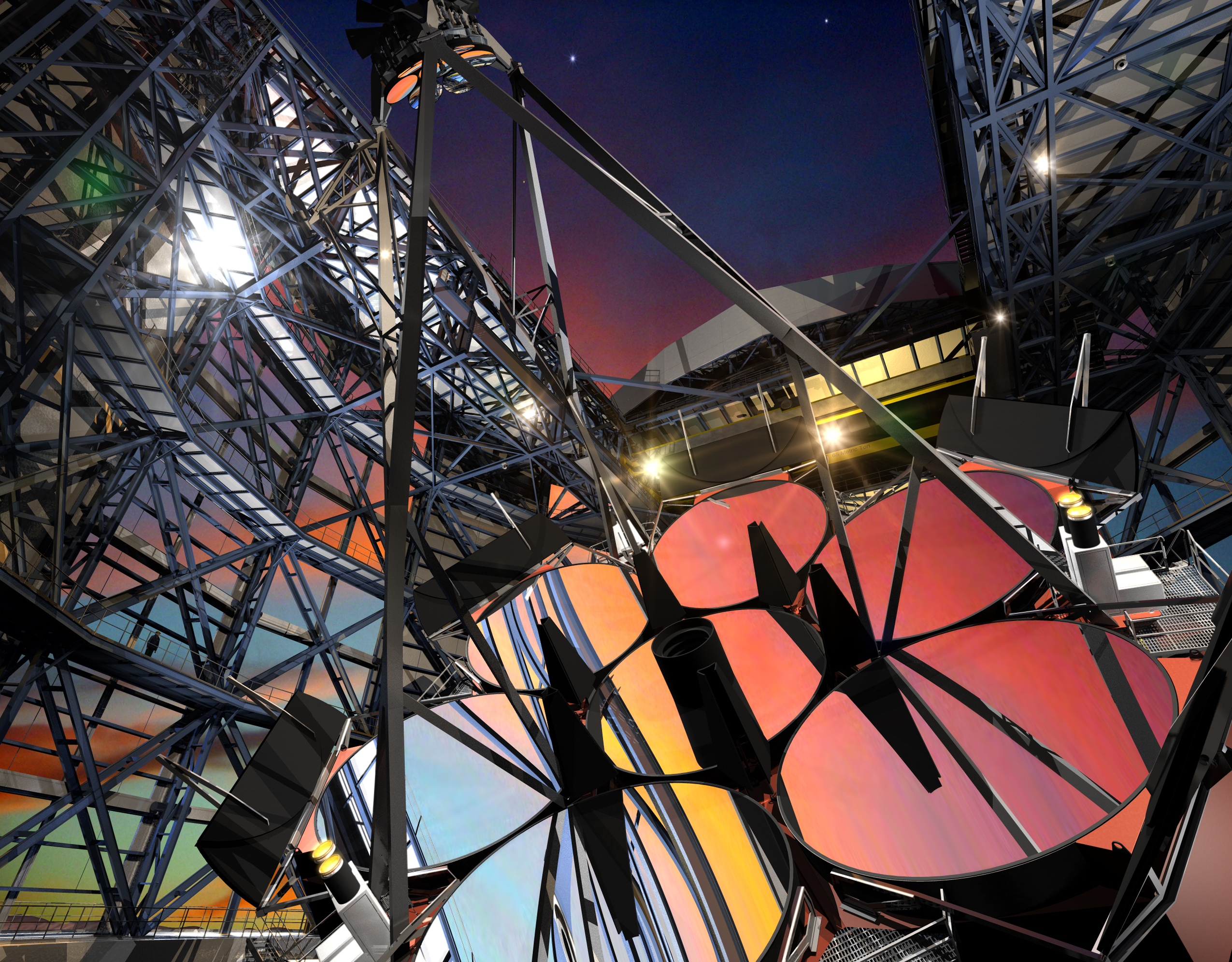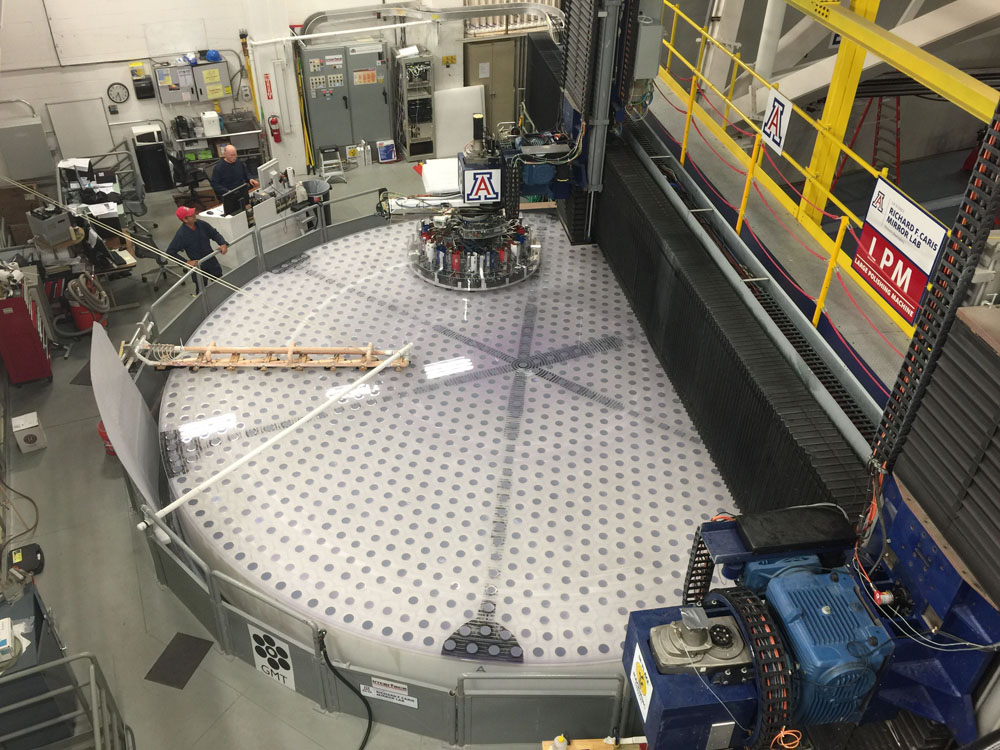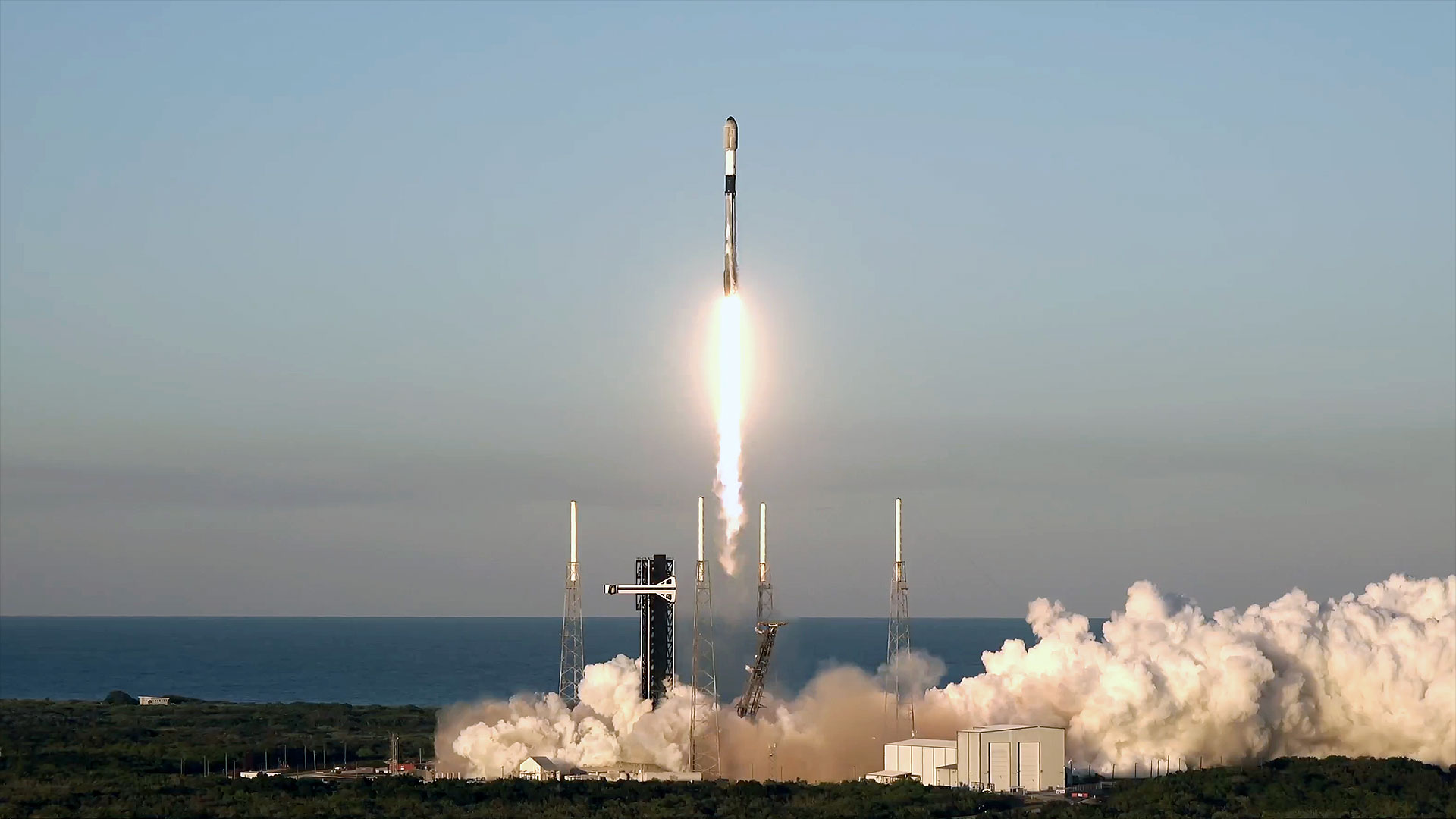Making the Giant Magellan Telescope's Massive, Incredibly Precise Mirrors

The largest single-piece astronomical mirrors ever made are slowly coming together for an eagle-eyed ground-based telescope.
To focus images for the Giant Magellan Telescope (GMT), which is under construction in Chile, the 27.6-foot-wide (8.4 meters) concave mirrors must be curved precisely, to within 20 nanometers — the width of a single glass molecule. When completed, the telescope will return images 10 times sharper than those of the Hubble Space Telescope.
At the American Astronomical Society's winter meeting in early January, Space.com caught up with the GMT's director, Pat McCarthy, as well as Buell Jannuzi, head of astronomy at the University of Arizona and director of its Steward Observatory, whose mirror lab is turning out the 20-ton (18 metric tons) glass mirrors. The duo discussed the progress of construction on the immense optical telescope and the demanding mirror-crafting process, plus the science they're most looking forward to from the telescope's start of operation, which could happen as early as 2023. [Space.com in Chile: Giant Magellan Telescope Groundbreaking Travelogue]
Two comparable ground megatelescopes with slightly larger fields of view — the Thirty Meter Telescope, which is under construction in Hawaii, and the European Extremely Large Telescope, which is being built in Chile — will use hundreds of tiny mirrors to focus the light of the cosmos. The GMT, on the other hand, will use just seven huge ones (plus one spare) to create the equivalent of an 80-foot (25 m) focusing surface, according to the researchers. Four of the mirrors have been cast already, and only one is completely polished.
Even before all of the mirrors are added, the GMT will become the biggest telescope in the world. By the time it starts to return results, several of the mirrors are expected to be in place.
"If I look at the current schedule, I suspect we'll have four, possibly five, mirrors in the telescope by then," McCarthy told Space.com. "Even with four mirrors, it will be the largest telescope in the world by a factor of two. That's kind of a big deal. And when we fill it out, it'll be a factor of six or so. Even with four mirrors, we'll get pretty close to the full angular resolution."
Even at an early stage, researchers will be able to use the telescope to peer deep into the universe's past, investigate the atmospheres of planets around other stars and search for signs of dark matter's effect on other galaxies.
Breaking space news, the latest updates on rocket launches, skywatching events and more!
Back to the grind
Each mirror is produced at the Steward Observatory's mirror lab through a process called spin casting, which uses a mold so the final mirror is hollow, which keeps it lightweight and closer to the air's temperature, to avoid distortion. The molten glass and mold are spun, creating a curved surface, and then cooled very slowly before the mold material is removed from the middle. That process creates lightweight but sturdy mirrors that you can run or walk or jump on: "You just don't drop a hammer on them," McCarthy said.
Jannuzi and McCarthy described a detailed timeline for the mirror creation. The spin-casting process takes 12 to 14 months, and is applied to one mirror at a time. Each comes out symmetrically curved around the center, and it takes a complicated polishing process to curve the surface differently — symmetrical around the center of the full mirror array, which means an off-center curvature for all but one of them. The mirrors will beam light to a small, curved mirror suspended above them, which will redirect the light back down, through a hole in the central mirror, to be measured and recorded.
"While [the segments each] look like a simple round mirror, they were more difficult to make than any large optic that's ever been made," Jannuzi told Space.com. "One way to think about it is, if we had a single big 25-meter [82 feet] mirror — think of it as a circle — and then you have a circular cookie cutter, and you cut seven discs out of that mirror — that's what our telescope is. But each one of those circles is part of a curved surface centered at the middle." [Photos: Third Mirror Cast for Giant Magellan Telescope]
To get that curvature to the 20-nanometer precision required, the mirror lab uses a very slow polishing process, Jannuzi and McCarthy said. The mirror is rotated as it's polished down, but the surface must be measured over and over throughout the process to ensure the right curve at each spot. The whole process has taken seven to eight years for one mirror because polishing isn't continuous, but they're working on cutting down that time by fitting more actual polishing time into less calendar time. (It takes 24 to 36 months of polishing to make each mirror.)
"We're trying to speed up [the process] as fast as we can, but currently, we'll finish the fourth segment just in time to meet what I think Pat [McCarthy] calls 'first engineering light,'" Jannuzi said. Researchers will be able to fine-tune the telescope's pointing and tracking, and the first major instruments likely will be installed in 2023 as well, so science can start very early on, Jannuzi and McCarthy said.
"The way we learn really how the telescope works is when people try to use it for its intended purpose," McCarthy said. "I think sometime in [20]23, [20]24, we'll start doing some science, but still be spending a fair amount of time engineering." After that, mirrors will arrive one by one, likely yearly, until it's at full capacity, he added.
Look at the sky!
If the telescope is installed in time, the earliest GMT science will likely make use of a spectrograph, a device that measures the wavelengths of light returned by objects in space to figure out what they're made of.
"I think we're the only one of the giant telescopes that currently has a high-resolution optical spectrograph in its first light, first-generation set of instruments," Jannuzi said. He's particularly excited to see what the high-resolution spectrograph can do, and to image (and eventually measure the spectrum of) the newly discovered planet Proxima b.
Whereas highly segmented giant telescopes with a large number of smaller mirrors can work well, they have to constantly monitor and adjust those mirrors during use to maintain focus. GMT's design, by contrast, puts the difficult work of engineering the telescope's focus earlier in the process, McCarthy and Jannuzi said.
"I like the idea of solving it in the lab, a controlled environment," McCarthy said. "If you make this large surface to the right shape, that's all you have to do — whereas if you've got to control a thousand pieces of glass over 14,000 feet [4,300 m] all the time, that's a different control problem in a much more hostile environment."
But the researchers stressed that GMT isn't competing with other telescopes; in fact, it will be able to pool observations with other large observatories in the Southern Hemisphere to probe the early universe.
"There's a huge, rich world of unknown things out there to be discovered," McCarthy said. "It's things like GMT, its cutting-edge new facilities, that bring out these great discoveries. We hope, once GMT is built, some clever young person comes along and does something completely unexpected with it that changes everything. That would be success."
"And while we're waiting for that, we'll have a lot of fun characterizing exoplanets," Jannuzi added.
Email Sarah Lewin at slewin@space.com or follow her @SarahExplains. Follow us @Spacedotcom, Facebook and Google+. Original article on Space.com .

Sarah Lewin started writing for Space.com in June of 2015 as a Staff Writer and became Associate Editor in 2019 . Her work has been featured by Scientific American, IEEE Spectrum, Quanta Magazine, Wired, The Scientist, Science Friday and WGBH's Inside NOVA. Sarah has an MA from NYU's Science, Health and Environmental Reporting Program and an AB in mathematics from Brown University. When not writing, reading or thinking about space, Sarah enjoys musical theatre and mathematical papercraft. She is currently Assistant News Editor at Scientific American. You can follow her on Twitter @SarahExplains.


